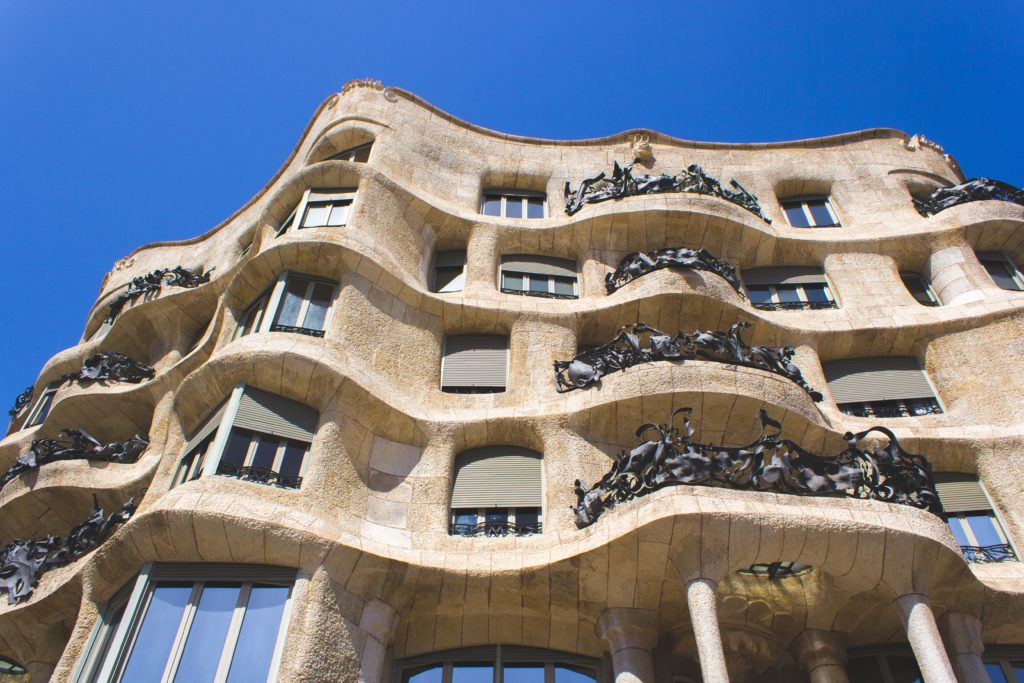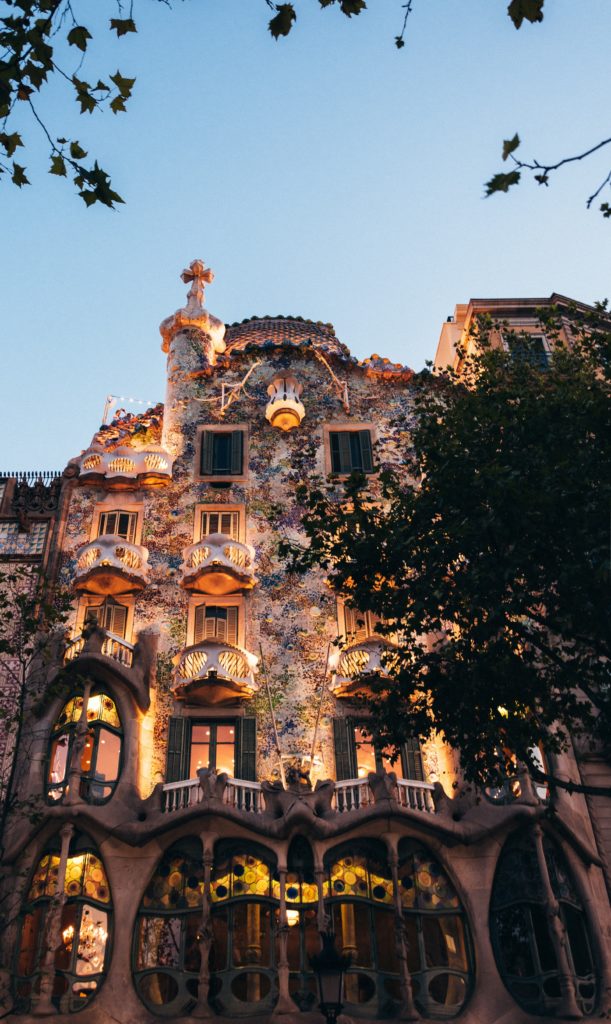Also called Barna (not to confuse with Barsa, the city football team), this city is probably the favourite Mediterranean destination for tourists of around the world. The combination of a great city, multicultural, with the sea and mountains near the center and the nice weather, makes it one of top places to visit all year round. There are many attractions in the city of Barcelona, below we are listing some of the most popular monuments and streets to see.
What to visit in Barcelona

Paseo de Gracia
This elegant avenue, most enjoyed by middle class during 19th century, connects Catalunya Square with Gracia neighborhood and that is the reason behind the name. Some of the most beautiful modernist buildings are located in this street so it is a perfect place to from when visiting the city.
Besides the cultural part, Paseo de Gracia is a busy shopping street where you will find all range of prices, from luxury fashion designers to popular brands such as Mango and Zara.

Casa Milà – “La Pedrera”
Representation of Gaudi’s main inspiration: nature and organic forms, this building was commissioned by Pere Mila, prominent member of the Catalan bourgeoisie and it was a great opportunity for Gaudi to create one of his most complete works. It consists of two blocks of apartments, each with its own entrance, structured around two large interconnected courtyards to provide more ventilation and lights to the flats.
It is known as La Pedrera (stone quarry) because it resembles and open quarry in appearance, where the building features forms drawn from nature.
It was Gaudi’s last work of civil architecture and represented a break with the conventions of his day.
Casa Batlló
The two more important characteristics of Casa Batlló when you walk by, are the colours and the fantasy that makes you stop to enjoy the beauty of this building. It was made by Antonio Gaudi with complete freedom in creativity and considered one of his most daring works.
Not only is important the direction of Gaudi in creating this project, but also the decorative work made by artisans during 1904 and 1906.
Natural light illuminates every corner thanks to the main skylight and two central patios decorated in blue tones, where the light is distributed. The upper tiles on the patios are darker than the lower ones and the windows increase in size the lower we descend. Thanks to theses two innovative ideas, the color graduation and the size of the windows, Gaudi was successful in equally distributing light through the different floors.


Sagrada Familia
It is probably the best known symbol of Barcelona and Gaudi’s greatest work. This modern temple has been under construction since 1882, having several additions from different artistic styles.
The original architect was replaced only one year later by Antonio Gaudi, who devoted himself to the task until the time of his death on 1926. During his lifetime, the crypt and The Nativity facade were completed at the side, which have been declared a World Heritage Site. The surviving models and drawings have made it possible to continue with the building work, which continues to be funded by private donations.
Catedral de Barcelona
Located in the Gothic quarter, the Cathedral stands out for its spectacular architecture and it was declared Asset of Cultural Interest and National Artistic Historical Monument. This temple pays tribute to Saint Eulalia, the city’s ancient patron saint. The construction began on 1298 for the Gothic church and the current cathedral was funded by contributions from the bourgeoisie and more modest worshipers. It took 150 years and was completed in the 19th century.
Parc Güell
The construction of this park was initiated in 1900, there is a singularity and beauty in this place that was declared World Heritage Site in 1984. The park was divided in two zones, the Monumental Zone spread over 12 hectares and main attraction of Park Güell. You can find a series of spectacular buildings and some of the most iconic works of Gaudi, including Park Güell Stairway and El Drac.
Second Zone is Woodland Zone with around 8 hectares and open to public for free, contains some exotic flora such as the hawthorn and oaks, and fauna as well.
Palau de la Musica Catalana
This modernist building is well hidden between narrow streets in the center of Barcelona and combines in a great facade, sculpture, mosaic stained glass windows and foundry.
The Concerts room is rich in its decoration and has great brightness thanks to the central skylight.
Mercado de la boquería
This market is the first opened in the city, on 1840 and located in an old convent. After years, the market has become a modern space with its own character and singularity.
Apart from being able to enjoy the beach right in the city of Barcelona, there are some cool neighborhoods with a lot of history and a mix of both traditional and new shops. Specially the areas of El Born and Gothic offer a nice walk around small streets, where to find great restaurants, shop, galleries…
Other places of interest in the city and not far from the center are the neighborhood of Gracias, Poblenou and Poblesec.
For the best views of the city, you should head to the north of the city and visit El Bunker, in the neighborhood of el Carmel, and contains rest of an anti-aircraft battery from Civil war.
*About the language used in this page, I have combined both Catalan and Spanish to write down the name of the monuments, artists, streets…based on its most popular use, to make it easier to understand and/or find online.
The council of Barcelona offers information about discounts for tickets to visit the monuments listed above in this link.
Check our cities page for more information about history and culture in Spain.